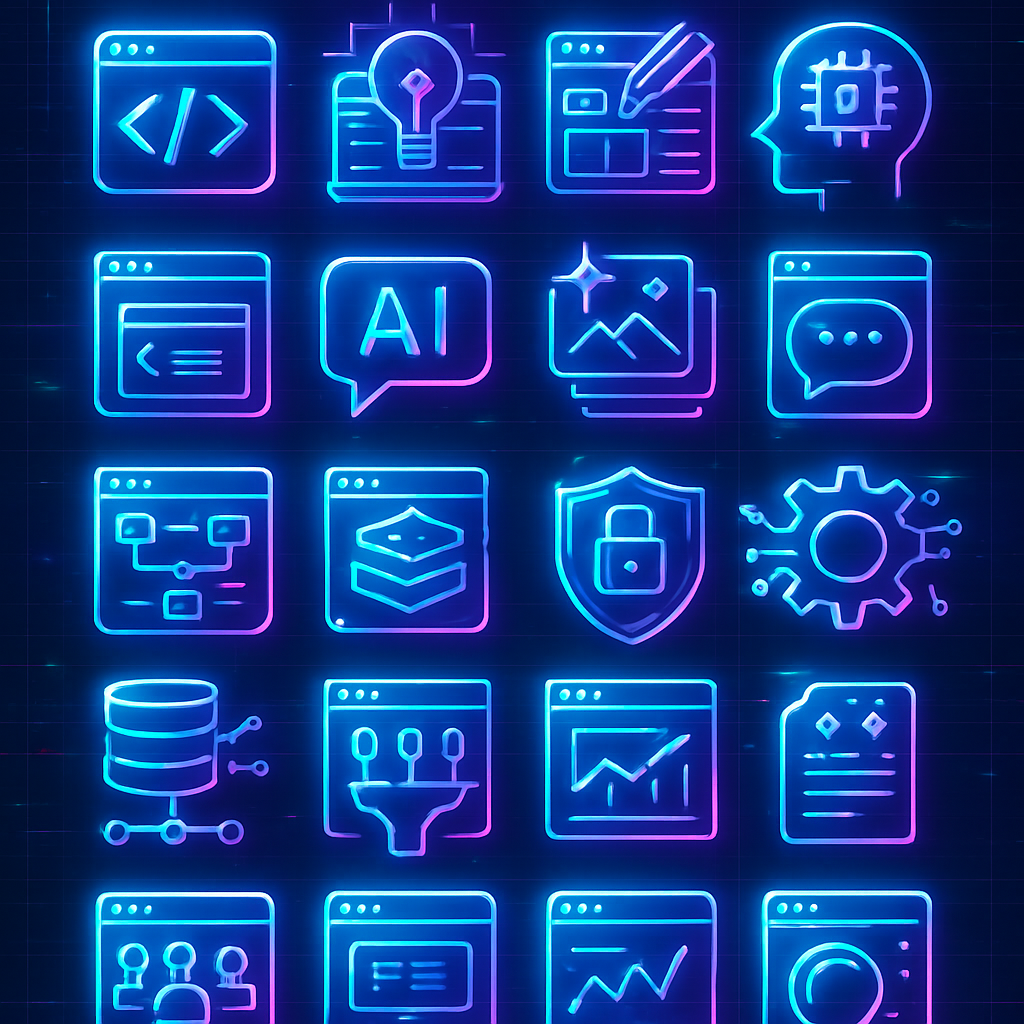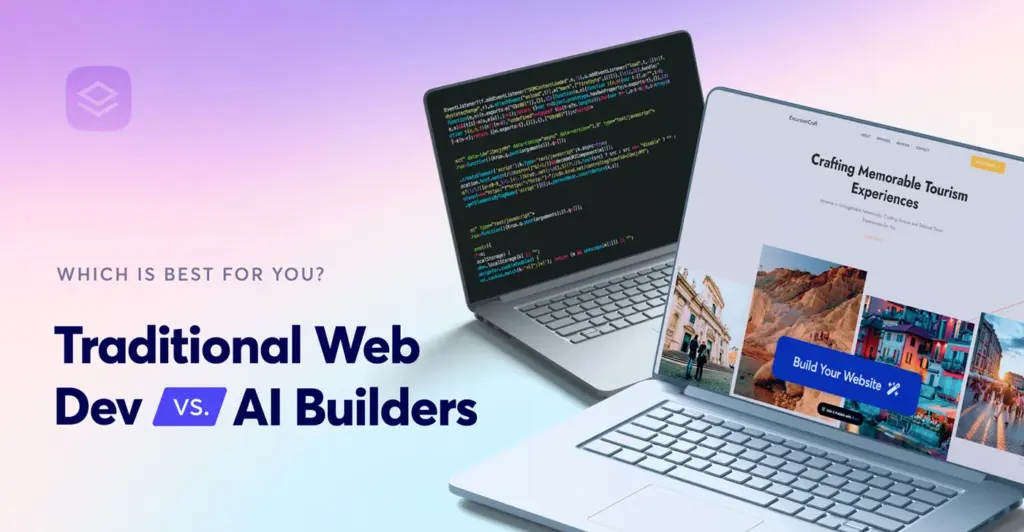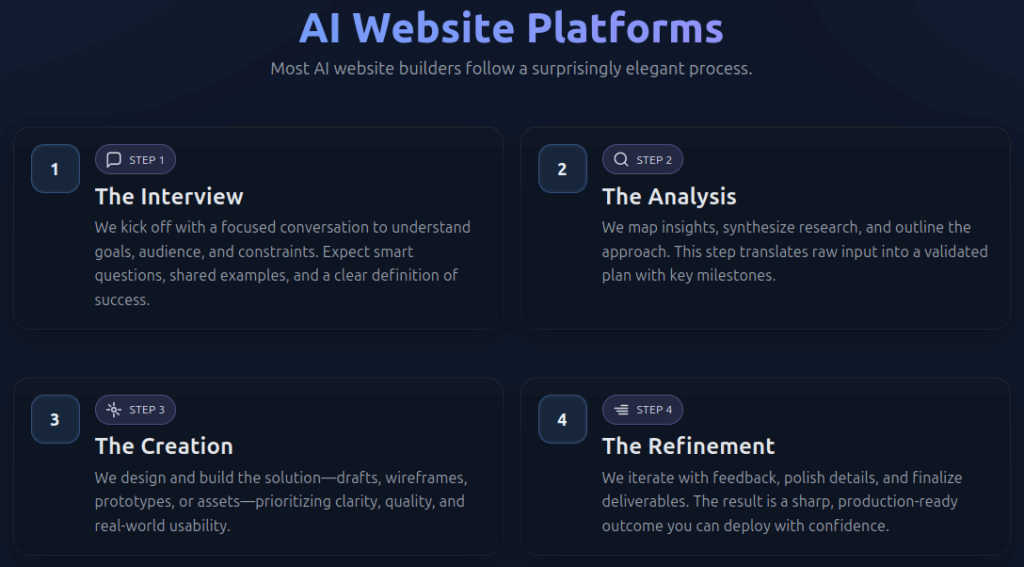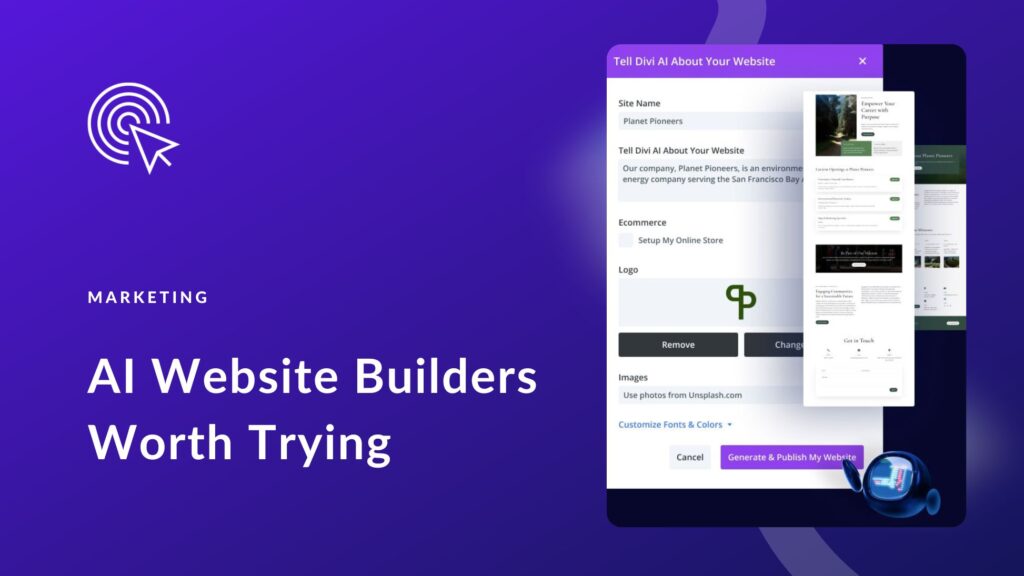Guide to AI Development Frameworks in 2025: 20 Game-Changing Tools Every Developer Needs to Know
Meta Description: Discover the best AI development frameworks for 2025. From TensorFlow 3.0 to PyTorch, explore 20 essential tools for deep learning, NLP, and edge AI development.
Picture this: You’re sitting at your desk at 2 AM, surrounded by empty coffee cups, staring at lines of code that seem to mock your every attempt at building something intelligent. Sound familiar?
I’ve been there. We all have.
The thing is, AI development frameworks have evolved from those early days when you had to build everything from scratch. Today’s landscape is like walking into a candy store – except instead of sugar rushes, you get neural networks that actually work.
Whether you’re a seasoned developer who remembers when machine learning meant writing your own gradient descent algorithms, a hobbyist diving into your first chatbot project, or an enthusiast trying to figure out what all the hype is about, this guide will walk you through the 20 most essential AI frameworks that are shaping 2025.

Why AI Development Frameworks Matter More Than Ever
Let me tell you something that took me years to learn: the right framework can make or break your AI project.
It’s not just about saving time (though you’ll save months). It’s about standing on the shoulders of giants – leveraging years of research, optimization, and real-world testing that teams of PhD-level engineers have poured into these tools.
Think of AI frameworks as your toolkit. You could try to build a house with just a hammer, but why would you when you have power tools available?
The Big Question: Which AI Development Frameworks Are Best for Beginners?
Before we dive into our top 20, let’s address the elephant in the room. If you’re just starting out, you’re probably overwhelmed by the sheer number of options. Here’s my honest take:
Start with Keras or FastAI. Seriously.
I know everyone talks about TensorFlow and PyTorch (and we will too), but these beginner-friendly frameworks let you build and train models with just a few lines of code. You’ll actually see results instead of getting lost in configuration files.
The Ultimate List: 20 AI Development Frameworks Ranked by Impact
✅ Tier 1: The Heavy Hitters
1. TensorFlow 3.0 – The Production Powerhouse
Website: tensorflow.org
TensorFlow isn’t just a framework – it’s an ecosystem. Google’s latest 3.0 release has addressed many of the complaints developers had about earlier versions. The learning curve is still steep, but once you’re up and running, it’s like driving a Formula 1 car.
Best for: Production deployments, large-scale projects, teams that need enterprise support
Latest features in TensorFlow 3.0:
- Improved Keras integration
- Better XLA compilation
- Enhanced distributed training capabilities
- Streamlined APIs that actually make sense
2. PyTorch – The Researcher’s Dream
Website: pytorch.org
If TensorFlow is the Formula 1 car, PyTorch is the motorcycle – nimble, intuitive, and perfect for when you need to take sharp turns quickly. The dynamic computation graphs make debugging feel almost… pleasant?
Best for: Research, prototyping, anyone who values flexibility over rigid structure
Why developers love it:
- Pythonic syntax that feels natural
- Dynamic graphs that change on the fly
- Fantastic community support
- Facebook’s backing (now Meta) means serious resources
| Feature | TensorFlow 3.0 | PyTorch |
|---|---|---|
| Learning Curve | Steep | Moderate |
| Production Readiness | Excellent | Good |
| Research Flexibility | Good | Excellent |
| Community Size | Massive | Large |
| Industry Adoption | Google, Uber, Airbnb | Meta, Tesla, Microsoft |
3. Keras – The Gateway Drug
Website: keras.io
Keras is like the friend who introduces you to a hobby that becomes your obsession. It’s built on top of TensorFlow, but with an API so clean and intuitive that you’ll wonder why all frameworks aren’t this simple.
Best for: Beginners, rapid prototyping, educational purposes
✅ Tier 2: The Specialists
4. Hugging Face Transformers – The NLP Revolution
Website: huggingface.co/transformers
Want to build the next ChatGPT competitor? This is where you start. Hugging Face has democratized natural language processing in a way that seemed impossible just five years ago.
Best for: NLP projects, chatbots, text analysis, anyone working with large language models
What makes it special:
- Pre-trained models for everything
- One-line fine-tuning capabilities
- Model Hub with thousands of options
- Community that shares everything
5. JAX – The Speed Demon
Website: jax.readthedocs.io
Google’s answer to “What if NumPy could compile to XLA and run on GPUs?” JAX is what happens when you take the best parts of NumPy and supercharge them with automatic differentiation and JIT compilation.
Best for: High-performance computing, research that needs speed, anyone who’s hit PyTorch’s performance ceiling
6. LangChain – The AI Agent Builder
Website: langchain.com
If you’ve ever wanted to build an AI agent that can use tools, access databases, and chain together multiple AI calls, LangChain is your new best friend. It’s like having a Swiss Army knife for LLM applications.
Best for: AI agents, complex workflows, applications that need to integrate multiple AI services
✅ Tier 3: The Reliable Workhorses
7. Scikit-learn – The Classic
Website: scikit-learn.org
The granddaddy of machine learning libraries. If you’re not building neural networks and just need solid, proven algorithms, scikit-learn has been getting the job done since 2007.
Best for: Traditional machine learning, data analysis, anyone who doesn’t need deep learning
8. FastAI – The Practical Choice
Website: fast.ai
Built on top of PyTorch but designed for practitioners who want results, not research papers. FastAI’s philosophy is “make deep learning accessible to everyone,” and they’ve succeeded brilliantly.
Best for: Practical applications, students, anyone who wants state-of-the-art results without a PhD
9. XGBoost – The Competition Winner
Website: xgboost.ai
If Kaggle competitions were a country, XGBoost would be the national anthem. This gradient boosting framework has won more machine learning competitions than any other single algorithm.
Best for: Tabular data, competitions, anything where you need the absolute best performance on structured data
10. ONNX – The Peacemaker
Website: onnx.ai
Tired of framework lock-in? ONNX lets you train in PyTorch and deploy in TensorFlow, or any other combination you can imagine. It’s the universal translator of the AI world.
Best for: Multi-framework workflows, deployment flexibility, enterprise environments with mixed toolstacks
✅ Tier 4: The Edge Cases and Specialists
11. TensorFlow Lite – The Mobile Companion
Website: tensorflow.org/lite
When you need to run AI models on smartphones, tablets, or IoT devices, TensorFlow Lite is your go-to. It’s all about making big models small and fast.
Best for: Mobile apps, IoT devices, edge computing
12. TorchServe – The Deployment Specialist
Website: pytorch.org/serve
Getting your PyTorch models into production used to be a nightmare. TorchServe turns that nightmare into a daydream with built-in model versioning, A/B testing, and scalability.
Best for: PyTorch model deployment, production serving, teams that need enterprise-grade model serving
13. Apache MXNet – The Flexible Giant
Website: mxnet.apache.org
Amazon’s choice for deep learning. MXNet offers the best of both worlds – symbolic and imperative programming. It’s not the most popular, but it’s incredibly powerful.
Best for: AWS deployments, applications that need both flexibility and performance
14. LightGBM – The Speed Optimizer
Website: lightgbm.readthedocs.io
Microsoft’s answer to XGBoost. Faster training, lower memory usage, and better accuracy on some datasets. It’s like XGBoost’s younger, more athletic sibling.
Best for: Large datasets, when training speed matters, gradient boosting applications
15. Microsoft Cognitive Toolkit (CNTK) – The Enterprise Choice
Website: github.com/microsoft/CNTK
Microsoft’s deep learning toolkit might not have the community buzz of PyTorch or TensorFlow, but it’s incredibly robust and integrates beautifully with the Microsoft ecosystem.
Best for: Enterprise environments, Windows-heavy shops, applications that need Microsoft integration
✅ Tier 5: The Specialists and Legacy Heroes
16. Deeplearning4j – The Java Solution
Website: deeplearning4j.org
For those times when you absolutely must use Java. Don’t laugh – enterprise environments love their Java, and Deeplearning4j brings deep learning to the JVM.
Best for: Java environments, enterprise applications, integration with existing Java systems
17. Caffe – The Vision Specialist
Website: caffe.berkeleyvision.org
Once the king of computer vision, Caffe has been overtaken by newer frameworks but still excels at convolutional neural networks. It’s like that reliable old car that still runs perfectly.
Best for: Computer vision, convolutional networks, when you need proven stability
18. PaddlePaddle – The Chinese Powerhouse
Website: paddlepaddle.org
Baidu’s deep learning platform is huge in China and growing globally. It offers unique features for industrial AI applications and has strong support for Chinese language processing.
Best for: Industrial AI, Chinese language processing, applications targeting the Chinese market
19. Chainer – The Pioneer
Website: chainer.org
Chainer introduced many concepts that PyTorch later adopted. While no longer actively developed, it’s still used in some research settings and deserves recognition for its innovations.
Best for: Historical interest, specific research applications, understanding the evolution of frameworks
20. Theano – The Foundation
Website: deeplearning.net/software/theano
The granddaddy of modern deep learning frameworks. Theano is no longer maintained, but it laid the groundwork for everything that came after. It’s like studying Latin – not immediately useful, but you’ll understand everything else better.
Best for: Historical understanding, educational purposes, appreciating how far we’ve come
Quick Reference: Complete Framework Overview
Here’s your at-a-glance reference for all 20 frameworks before we dive deep:
| Framework | Primary Use | Difficulty | Best For | Language | Community |
|---|---|---|---|---|---|
| TensorFlow 3.0 | Production Deep Learning | Hard | Enterprise, Scale | Python, C++ | ★★★★★ |
| PyTorch | Research & Prototyping | Medium | Flexibility, Research | Python | ★★★★★ |
| Keras | Beginner-Friendly DL | Easy | Learning, Prototyping | Python | ★★★★★ |
| Hugging Face | NLP & Transformers | Medium | LLMs, Chatbots | Python | ★★★★★ |
| JAX | High-Performance ML | Hard | Speed, Research | Python | ★★★☆☆ |
| LangChain | AI Agents | Medium | LLM Applications | Python | ★★★★☆ |
| Scikit-learn | Classical ML | Easy | Traditional ML | Python | ★★★★★ |
| FastAI | Practical Deep Learning | Easy | Education, Practice | Python | ★★★★☆ |
| XGBoost | Gradient Boosting | Medium | Tabular Data | Python, R | ★★★★☆ |
| ONNX | Model Interoperability | Medium | Deployment | Multi | ★★★☆☆ |
| TensorFlow Lite | Edge Deployment | Medium | Mobile, IoT | Python, C++ | ★★★★☆ |
| TorchServe | PyTorch Serving | Medium | Production | Python | ★★★☆☆ |
| Apache MXNet | Flexible Deep Learning | Hard | AWS, Scalability | Python, R | ★★★☆☆ |
| LightGBM | Fast Gradient Boosting | Medium | Large Datasets | Python, R | ★★★☆☆ |
| CNTK | Enterprise Deep Learning | Hard | Microsoft Stack | Python, C++ | ★★☆☆☆ |
| Deeplearning4j | Java Deep Learning | Hard | Java Ecosystem | Java | ★★☆☆☆ |
| Caffe | Computer Vision | Medium | CNN, Vision | Python, C++ | ★★☆☆☆ |
| PaddlePaddle | Industrial AI | Medium | Chinese Market | Python | ★★★☆☆ |
| Chainer | Research (Legacy) | Medium | Historical | Python | ★☆☆☆☆ |
| Theano | Foundation (Legacy) | Hard | Educational | Python | ★☆☆☆☆ |
How Do AI Frameworks Support Large Language Models?
Here’s where things get really interesting. The rise of large language models has completely changed the framework landscape. Here’s what you need to know:
Modern frameworks handle LLMs through:
- Distributed training across multiple GPUs and machines
- Memory optimization techniques like gradient checkpointing
- Model parallelism for models too large for single devices
- Efficient attention mechanisms like Flash Attention
- Quantization to reduce model size
The frameworks leading this charge? Hugging Face Transformers, LangChain, and specialized versions of PyTorch and TensorFlow.
Framework Selection Matrix
| Your Goal | Recommendation | Alternative | Why |
|---|---|---|---|
| Learning AI/ML | Keras → FastAI | Scikit-learn | Easy progression path |
| Research & Experimentation | PyTorch | JAX | Flexibility and debugging |
| Production Deployment | TensorFlow | MXNet | Proven at scale |
| NLP Projects | Hugging Face | LangChain | Ecosystem and models |
| Mobile/Edge AI | TensorFlow Lite | ONNX Runtime | Optimization tools |
| Traditional ML | Scikit-learn | XGBoost | Simplicity vs performance |
| Enterprise Java | Deeplearning4j | ONNX + Java | Platform integration |
| Competitive ML | XGBoost | LightGBM | Competition proven |
The Edge Computing Revolution
Edge AI development frameworks are having a moment. Why? Because nobody wants to send their data to the cloud for every AI inference.
Key players in edge AI:
- TensorFlow Lite for mobile
- ONNX Runtime for cross-platform deployment
- Apache TVM for optimization
- Custom silicon frameworks like Core ML for Apple devices
Federated Learning: The Privacy-First Approach
Federated learning frameworks are becoming crucial as privacy concerns grow. Instead of centralizing all data, these frameworks let you train models across distributed devices while keeping data local.
Leading federated learning frameworks:
- TensorFlow Federated
- PySyft
- FedML
- Flower
How to Choose the Right AI Framework for Your Project
Here’s my framework for choosing frameworks (meta, I know):
Ask Yourself These Questions:
- What’s your experience level?
- Beginner: Keras, FastAI
- Intermediate: PyTorch, standard TensorFlow
- Expert: JAX, custom solutions
- What type of problem are you solving?
- Computer vision: PyTorch, TensorFlow
- NLP: Hugging Face, LangChain
- Traditional ML: Scikit-learn, XGBoost
- Edge deployment: TensorFlow Lite, ONNX
- What’s your deployment target?
- Cloud: Any major framework
- Mobile: TensorFlow Lite, Core ML
- Browser: TensorFlow.js
- Edge devices: ONNX Runtime, TensorFlow Lite
- Do you need production features?
- Model serving: TorchServe, TensorFlow Serving
- Monitoring: MLflow, Weights & Biases integration
- A/B testing: Built-in serving solutions
The Programming Languages You Need to Know
Most AI frameworks center around Python, but here’s the broader picture:
- Python: The lingua franca (TensorFlow, PyTorch, Keras, scikit-learn)
- JavaScript: For web deployment (TensorFlow.js, Brain.js)
- Java: For enterprise (Deeplearning4j, DJL)
- C++: For performance-critical applications (LibTorch, TensorFlow C++)
- R: For statistical analysis (torch for R, TensorFlow for R)
- Swift: Apple’s bet on AI (Swift for TensorFlow – though development has slowed)
Model Deployment and Scalability: The Real Challenge
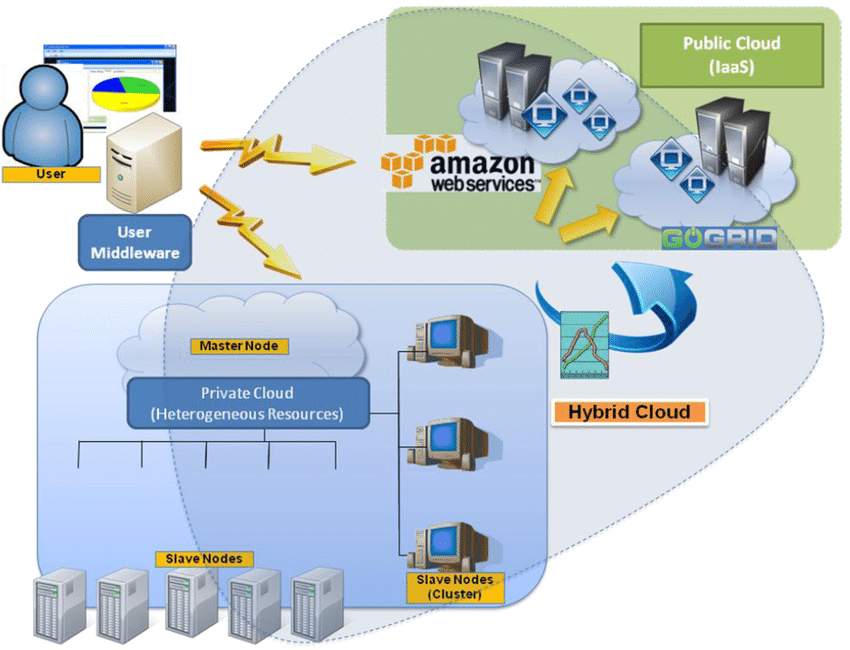
Building models is fun. Deploying them? That’s where careers are made or broken.
Modern deployment patterns:
- Containerization with Docker and Kubernetes
- Serverless functions for small models
- Model serving platforms like Seldon, KFServing
- Edge deployment for low-latency applications
Scalability considerations:
- Auto-scaling based on demand
- Model versioning and rollback
- A/B testing capabilities
- Monitoring and observability
The Future: What’s Coming in 2025 and Beyond
The AI framework landscape is evolving rapidly. Here’s what I’m watching:
Emerging Trends:
- Unified frameworks that handle the entire ML lifecycle
- No-code/low-code AI development platforms
- Specialized hardware frameworks for new chip architectures
- Privacy-preserving ML frameworks
- Quantum-classical hybrid frameworks
Framework Consolidation:
The market is consolidating around a few major players, but niche frameworks continue to thrive in specialized areas. I predict we’ll see more interoperability rather than framework wars.
Performance Benchmarks: Speed, Memory, and Accuracy
| Framework | Training Speed | Memory Efficiency | Inference Speed | Community Score |
|---|---|---|---|---|
| PyTorch | Fast | Good | Fast | 9/10 |
| TensorFlow | Very Fast | Excellent | Very Fast | 10/10 |
| JAX | Fastest | Good | Fastest | 7/10 |
| Keras | Moderate | Good | Moderate | 8/10 |
| FastAI | Fast | Good | Fast | 8/10 |
Note: Benchmarks vary significantly based on use case, hardware, and model architecture.
Common Pitfalls and How to Avoid Them
Let me save you some pain I’ve experienced firsthand:
Mistake #1: Framework Hopping
Don’t chase the shiny new framework every month. Pick one, learn it deeply, then expand.
Mistake #2: Ignoring Production Requirements
That Jupyter notebook that works perfectly? It’s not production-ready. Plan for deployment from day one.
Mistake #3: Not Considering Team Skills
The best framework is the one your team can actually use effectively. A mediocre solution shipped is better than a perfect solution stuck in development.
Mistake #4: Overlooking Community Support
Frameworks rise and fall. Strong community support is often more valuable than cutting-edge features.
The Bottom Line: My Personal Recommendations
After years of working with these frameworks, here are my honest recommendations:
If you’re starting out: Begin with Keras or FastAI. Get comfortable with the concepts before diving into more complex frameworks.
For most projects: PyTorch offers the best balance of flexibility and ease of use. The community is fantastic, and you’ll find solutions to almost any problem.
For production at scale: TensorFlow remains the gold standard. The ecosystem is mature, and Google’s continued investment shows no signs of slowing.
For NLP projects: Hugging Face Transformers is non-negotiable. It’s not even a competition.
For traditional ML: Scikit-learn for beginners, XGBoost or LightGBM when you need maximum performance.
For deployment: Learn ONNX and TensorFlow Lite. Framework interoperability is the future.
Your Next Steps: Getting Started Today
Here’s your action plan:
- Pick one framework from this list based on your goals
- Complete the official tutorial (seriously, don’t skip this)
- Build a simple project with your own data
- Join the community (Discord, Reddit, Stack Overflow)
- Read the documentation (I know, I know, but it helps)
- Start small, scale gradually
Conclusion: The Framework That Matters Most
Here’s the truth nobody talks about: the best AI development framework is the one you actually ship projects with.
I’ve seen brilliant developers get stuck in analysis paralysis, constantly switching between frameworks, never shipping anything. I’ve also seen junior developers build impressive projects with “inferior” frameworks simply because they focused on solving problems instead of optimizing tools.
The AI framework landscape in 2025 is incredibly rich. Whether you’re building the next breakthrough in computer vision, trying to automate your company’s customer service, or just experimenting with AI for fun, there’s a framework that fits your needs.
The real magic isn’t in the framework – it’s in what you build with it.
So pick one, start building, and remember: every expert was once a beginner who refused to give up.
Ready to dive deeper? Which framework caught your attention? Drop a comment below and let me know what you’re planning to build. I read every comment and often feature interesting projects in future posts.
Want to stay updated? The AI framework landscape changes rapidly. Subscribe to our newsletter for monthly updates on new releases, performance benchmarks, and real-world case studies.
Remember: The best time to start learning AI development was five years ago. The second-best time is now.
Sources and Further Reading:
- Savvy Software Solutions – AI Development Framework Guide
- LinkedIn – Top AI Development Frameworks for 2025
- Refonte Learning – AI Development Tools and Frameworks
- Clockwise Software – Artificial Intelligence Framework Guide
- Splunk – Understanding AI Frameworks
- AI21 Labs – AI Governance Frameworks
- Akka – Agentic AI Frameworks


